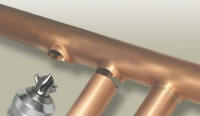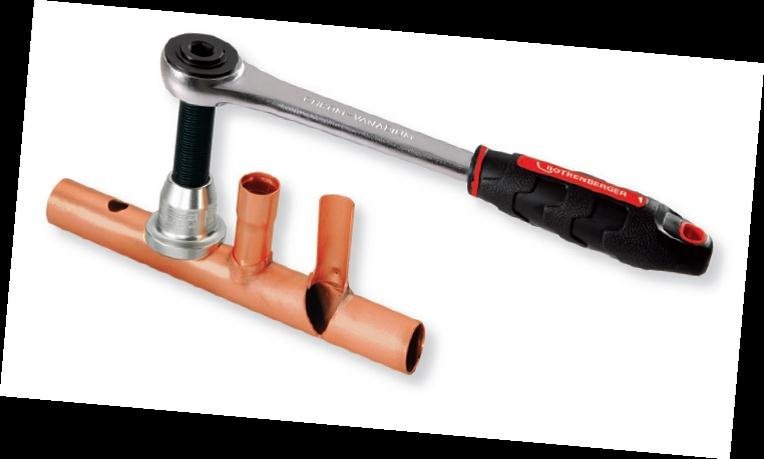 Extracted tee’s or “pulled tee’s” as they’re sometimes called, is a method of forming a smaller branch in a larger diameter copper pipe. They are permitted for use under the 2010 National Plumbing Code of Canada, with the following stipulations:
Extracted tee’s or “pulled tee’s” as they’re sometimes called, is a method of forming a smaller branch in a larger diameter copper pipe. They are permitted for use under the 2010 National Plumbing Code of Canada, with the following stipulations:
- Only types K and L copper may be used because they have an adequate wall thickness. Type M and DWV are not permitted.
- The branch formed must be at least one pipe size smaller in diameter.
- Special tools designed for extracting tees must be used (Tee Extractor Set).
- The end of the pipe forming the new branch must be prevented from penetrating into the flow of the existing pipe.
- The new joint has to be brazed or silver soldered. Soft solder is not permitted.
Hand Formed Extracted Tee
Extracting a tee was common place in the past when labor was often cheaper than purchasing expensive manufactured copper tee fittings. In those days, pulling a tee involved cutting a small hole, repeatedly heating the pipe to anneal the copper and slowly forming the tee with a couple of simple hand tools. An older friend and I worked with and demonstrated the process, seen below. Thanks Marc!
Power Tool For Extracting Tees
T-Drill makes a handy tool set that really speeds up the process. It uses a special drill bit that pierces the pipe, and pulls the cup out into the exact diameter needed for a similar size pipe. It also comes with a tool to form the branch end, and dimple the pipe to prevent it from penetrating too far into the pipe.




